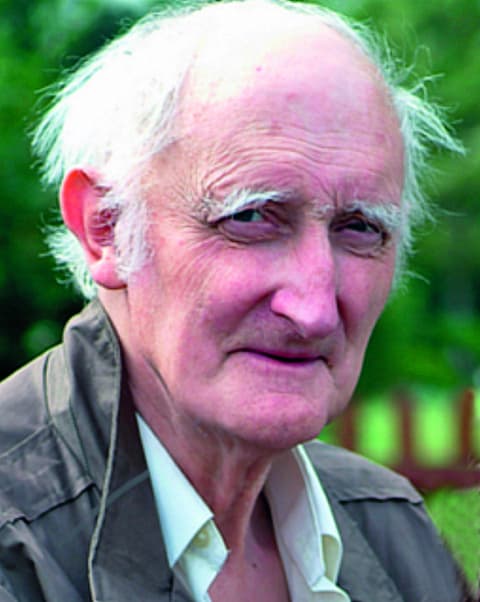Legend Geoffrey Crawley was honoured with an Exceptional Achievement in Photography Award at the prestigious Amateur Photographer Awards 2011
The award served as a fitting tribute to the magazine?s photo-science consultant (pictured) who died in October last year aged 83.
The award, sponsored by Grays of Westminster, was collected by Geoffrey?s widow Carolyn.
Speaking at the awards presentation ceremony in Whitehall, London Amateur Photographer (AP) Editor Damien Demolder said: ?Tales of how Geoffrey unmasked the Cottingley Fairy fakes and his work surrounding the John F Kennedy assassination have already been told in the numerous obituaries that have appeared across the globe, from the Guardian, the Telegraph and the New York Times.
‘What I think is more important is what Geoffrey means to the readers of AP. Our first connection with Geoffrey Crawley came in the 30 October issue of AP in 1963, when the then technical editor, Neville Maude, tested some of the first samples of Paterson?s Acutol developer.

?Acutol is a film developer formulated by Geoffrey, who went on to create Acuprint and Acufix, and then the FX-39 one-shot high-definition film developer.
?Geoffrey had come to the attention of Arthur Dalladay, the editor of the British Journal of Photography (BJP), in 1960, when he submitted an article on the subject of how developers worked. Along with his explanation he included alternative formula to popular commercial chemicals, a point noted by Donald Paterson the founder of Paterson products and the inventor of the modern plastic spiral.
?Paterson decided to market some of Geoffrey?s formulations under the Acu brand, and they became extremely popular with the Amateur Photographer audience of the time. Geoffrey continued to work for Paterson until just a few years ago, when the company decided that further research into chemical formula was unnecessary.
?When Geoffrey joined us after editing the BJP for 21 years, he was already a familiar figure with the more serious end of our readership, and he was welcomed with trumpets and drums. The readers were very excited and those who knew him less held their breath as they read his first lens reports for the magazine.
‘Geoffrey went on to write a regular series in addition to the lens tests, called Geoffrey Explains, in which he laid bare some of the finer points of photographic theory.?
Damien paid tribute to a man with a ‘cavernous mind’ and an ‘eye for detail and investigation’, whose generosity gave thousands of people a better understanding of photographic practice, and whose modesty ?had to be fought for him to allow us to use his full name, rather than just his initials, on his articles?.
Damien added: ‘One reader summed it up very well when he wrote “The photographic world has lost a great man, but we are all greatly privileged to have learned from his knowledge. May he continue to live on in the minds of those who have learned from his knowledge. And may his legacy be better photographs from those he has taught”.
?Geoffrey?s unfinished symphony is ?How Black and White film works?, a piece he was apologising for having not finished right up until his last days.
?I could pick it up and finish it myself, but I know that what I?d write would be nothing compared to the insights that Geoffrey would reveal. We?ll never know how it would have ended.?
RELATED ARTICLES
Tributes to photographic scientist Geoffrey Crawley
Canon EOS 60D scoops AP Awards title







